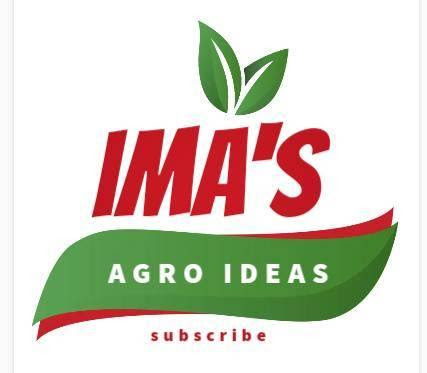WHAT DO WE MEAN BY PROPAGATION?
Propagation is simply multiplication or production of plants, which you can do by using your own plants! Because of the commercialization of crops, several techniques have been developed to grow plants. All techniques are designed to achieve specific goals, like uniformity in crops, increased productivity, disease-resistant plants, and plants with desired characters.
Thus;
Plant propagation is the process of increasing the number of plants of a particular species or cultivar. There are two primary forms of plant propagation: sexual and asexual. In nature, propagation of plants most often involves sexual reproduction, or the production of viable seeds.
Mainly these techniques are divided into two categories depending on the means of propagation: Sexual means of propagation and asexual means of propagation. Let’s have a look at each of them in detail.
Sexual propagation of plants involves the union (fertilization) of pollen and egg leading to seed formation. So, it can also be called ‘seed propagation’. It’s an old, easy, simple, and effective technique for ornamentals or flowering plants, vegetables, fruits, and medicinal plants. It allows for genetic diversity in plant species and creates new varieties and cultivars of plants. Also, seeds can be stored for a long period of time.
The disadvantages of this technique are delayed flowering and fruiting, plants that do not produce seeds can not be propagated by this method, identical plants can not be produced, and mass production is harder to achieve.
Considering these disadvantages, asexual propagation methods are being developed and followed by several culturists and hobbyists worldwide.
ASEXUAL PROPAGATION
Asexual propagation of plants can also be called ‘vegetative propagation’ because it involves the use of vegetative parts of plants like leaves, stems, roots, or modified organs. It’s the best method to use to clone your plants, which means to produce plants identical to their parents. It involves methods like cutting, division, layering, grafting, budding, and tissue culture techniques. These techniques are commercially exploited mainly to produce horticulture plants.
The demerits of the asexual means of propagation are: difficulty in producing new varieties, the practice and skillsets required to follow these methods, and plants being more prone to any kind of stresses.
1. Cutting
This is cutting the vegetative part of the plant (leaf, stem, and root) and then planting it again to regenerate the whole plant. The three types of cutting are named after the plant part being detached/cut:
- Stem cutting
- Leaf cutting
- Root cutting
Source: https://www.majordifferences.com/2013/03/differen...
This is a suitable technique for perennials (plants that live for more than two years). It involves dividing the plant by digging and moving it to an already prepared site. This helps the plant to rejuvenate and reduce water and nutrient competition.
Dividing perennial plants by using a garden fork.
Source: https://www.gardenersworld.com/plants/five-method...
In this technique, the attached and bent branch of the plant is covered with soil and allowed to root. After the emergence and development of roots that specific part of the plant is cut and allowed to grow as a new plant. This is called ‘layering’.
A schematic diagram showing a simple layering process.
Source: https://www.groworganic.com/blogs/articles/how-to...
This involves cutting a twig of one plant and joining it with the stem of another plant in such a manner that they form a unit and function as one plant. It is a bit of a complex process but allows you to bring the desired character to your plant. However, be sure to sterilize your hands and tools to make sure you don’t transfer any infections during the process.
A schematic diagram of the grafting technique.
Scion: the upper portion of the graft.
Rootstock: the lower portion which is providing root.
Source: https://www.toppr.com/ask/question/explain-grafti..
In this method, a cut is made in the rootstock and a single bud with little or no wood is inserted into it in such a way that they unite and grow as a new plant.
Source: https://www.toppr.com/ask/question/bud-grafting-i...
This is the most recent and advanced technique in which plant tissues are grown in media under controlled and sterile conditions/environments. It is extensively used for commercial purposes to produce clones of plants or mass produce plants. It also provides several advantages over all the traditional methods explained above.
Advantages of tissue culture technique:
- It allows for the production of clones or exact copies of the mother plant.
- Plants with desired traits or characters can be grown using this technique.
- It is beneficial in propagating plants without seeds.
- It allows the production of plants in a shorter period of time compared to traditional techniques.
- Plants that are difficult to grow by traditional methods can be grown by this method.
- Disease-free plants can be produced.
- Mass production of plants is possible with this technique.
- Enhance productivity.
- Easy transportation of plants.
Which technique you should choose depends on what type of plant you want to propagate, the purpose of your propagation, and how much time and effort you can put into the process. So, make your choice and get started working on your greeneries!
Happy culturing!!!
REFERENCES
- https://ncert.nic.in/vocational/pdf/kegr103.pdf
- https://resourcecentral.org/plant-propagation-meth...
- https://en.wikipedia.org/wiki/Plant_propagation
- https://extension.umaine.edu/gardening/manual/prop...
- https://en.wikipedia.org/wiki/Plant_tissue_culture
- https://www.toppr.com/ask/question/explain-graftin...
- https://www.groworganic.com/blogs/articles/how-to-...
- https://www.gardenersworld.com/plants/five-methods...
- https://www.majordifferences.com/2013/03/d

No comments:
Post a Comment